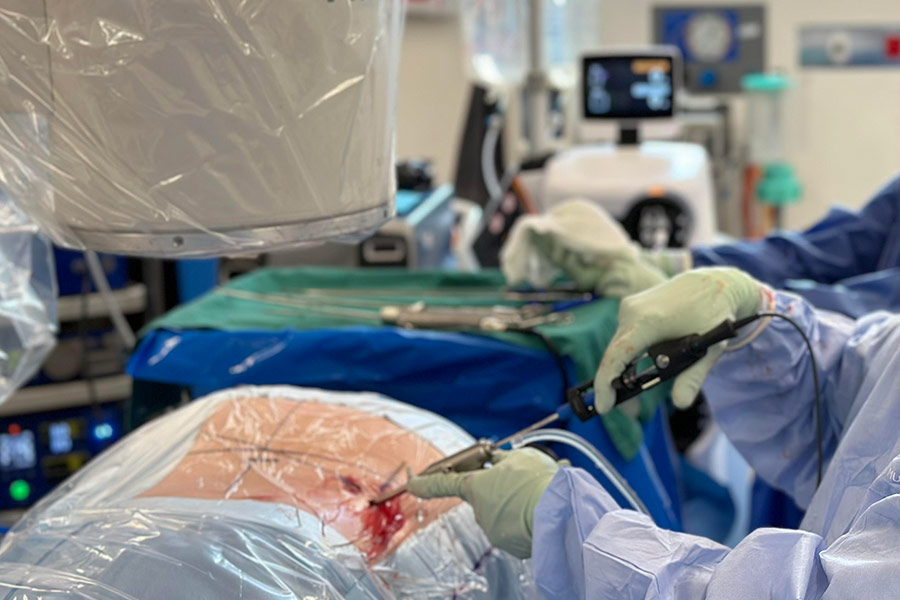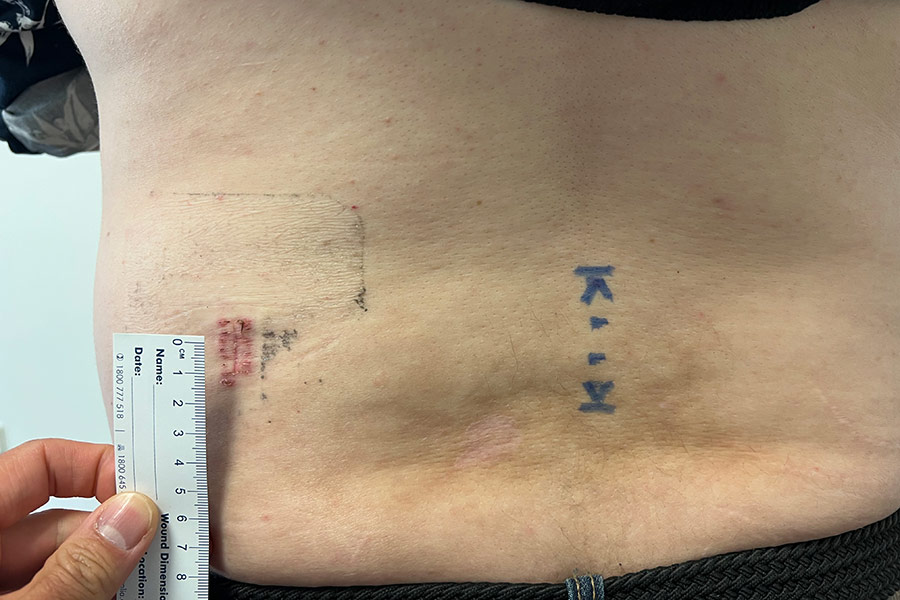
Endoscopic Spine Surgery is an ultra minimal invasive spinal surgical technique, performed treat a range of spinal conditions.
Endoscopic Spine Surgery began in the 1970’s but it was only in 1999 that the first fully functional endoscopic spine system was developed. Since then, spine endoscopy has progressively increased in popularity, with significant advancement in instrumentation to facilitate and complement the ultra minimal invasive technique. Endoscopic Spine Surgery is now widely performed in many Asian countries like South Korea and Singapore, similarly surgeons in Australia are gradually adopting this technique.
Endoscopic Spine Surgery is performed through keyhole incision (usually < 1cm). Utilising intraoperative X-ray, the procedure began by passing a small needle to the area of interest within the spinal canal, such as a herniated disc. Then using small guidewires, dilators are sequentially inserted with minimal disruption to normal tissue. A dedicated spine endoscope with high-definition camera system is then introduced to the target area, which allows visualisation of the spinal structures such as disc, joint, ligaments and spinal nerves. Through the dedicate endoscopic system, specialised endoscopic instruments can then be introduced to address various spinal conditions such as removal of disc herniation, removal of overgrown bone (osteophytes) and ligaments to decompress the spinal nerves.
Endoscopic Spine Surgery is performed with the aid of neuromonitoring system, which monitor the patients’ spinal nerve function throughout the procedure.
Post procedure, patients are encouraged to commence mobilisation as soon as possible, most patients can go home the next day (same day for some patients). Returning to work depends on the type of work, light duties/ desk-based task may commence at 1-2weeks, heavier tasks should wait until around 6 weeks.

Blue marker indicates midline and size of normal microdiscectomy incision (~3cm). Ruler indicates a paramedian incision for transforaminal endoscopy and incision length.
Traditional open spinal surgery typically requires larger incision, muscle dissection, which increased postoperative pain, longer hospital stay and recovery.
Proposed advantages of Endoscopic Spine Surgery include:
- Safe (as the procedure is performed under constant neuromonitoring which monitor spinal nerve function)
- Tiny incision
- Minimal muscle and bone dissection
- Reduced blood loss
- Reduced postoperative pain
- Reduced requirement for strong analgesia (pain killers)
- Early mobilisation and rehabilitation
- Reduced hospital stay
- Early return to work
Dr Lee has undergone vigorous training in spine endoscopy and has started offering endoscopic spine surgery to suitable selected patients. At this stage, Endoscopic Spine Surgery is performed for disc herniation, but in time may include other spinal conditions.
Endoscopic Spinal Surgery may not be suitable for all patients. Dr Lee will discuss various treatments options available as well as whether your condition is suited to be treated with Endoscopic Spinal Surgery.

